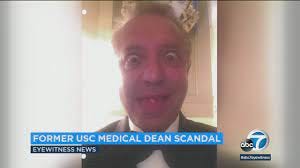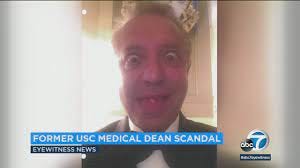Books About Investigative Reporting Are Even More Interesting Than They Used to Be
What we can learn from a close read of Paul Pringle's 'Bad City'
Welcome to Second Rough Draft, a newsletter about journalism in our time, how it (often its business) is evolving, and the challenges it faces. This week’s edition is publishing a few days early because it seems timely.
Most insider books about investigative journalism, from All the President’s Men to She Said, are generally heroic from start to finish. The first-person reporters bravely seek the truth and hold the powerful to account; their editors may at first be skeptical, but ultimately become their partners and champions as the bad guys are laid low. I love these books, and gobble them up.
In recent years, a new variant has appeared, the story of the reporter (still brave) who fights against powerful interests, this time not only outside but also inside their own newsroom. Just before the pandemic, there was Ronan Farrow’s Catch and Kill, in which the bad guys included not only Harvey Weinstein but much of the leadership of NBC News. Now we have Paul Pringle’s Bad City, which contends with malevolent leaders at the University of Southern California as well ostensibly as at the top of the masthead at the Los Angeles Times. These books may not be quite as much fun, but I think they’re actually more interesting.
That’s at least in part because the editor villains, quietly or loudly, tend to fight back, and, if we follow the bouncing ball, we get a deeper, more nuanced picture of the complexity of investigative work, and the flaws as well as the virtues of the people who do it. This week I want take a look at Pringle’s book, and the responses to it, not to wallow in the he said/he said, but to try to divine something from it all.
The underlying story is fairly straightforward: Carmen Puliafito was the dean of USC’s Keck School of Medicine. He was also a methhead, and a serial abuser of young women (and some of their male friends and family), using them for sex and drug-filled partying while spending thousands. By the time the LA Times started on his trail, he had also left the deanship in mid-semester, the reasons for which the university was engaged in covering up.
Reporter Pringle— with an extensive portfolio of strong stories to his credit— got a tip about Puliafito in a hotel room with an unconscious 21 year-old woman and copious meth. He didn’t get all that far on the story in his first 10 months of on-and-off part-time reporting (he didn’t have the woman’s name or any indication that others were involved, nor any actual evidence of the incident’s tie to Puliafito stepping down as dean three weeks later, especially in the face of a denial of same from the doctor). These limited returns stemmed in part from the paper’s top editors showing an inexplicable lack of enthusiasm for the story. They allegedly stymied Pringle’s most aggressive attempts to report, and entertained complaints from USC behind his back.
Pringle then proposed to publish what he knew, presumably (although he never quite says so) in an attempt to “shake the trees” and jump-start the investigation. That is a time honored technique, and can work. The editors, led by editor-in-chief and publisher Davan Maharaj and managing editor Marc Duvoisin, refused. That’s where accounts diverge in the ways that make all of this so fascinating.
Even by Pringle’s account, however, the story quickly and enormously improved after it was held back. He was given four colleagues to work with him—he says unbeknownst to the top editors; four of the editors most involved in the story say otherwise. In about a week, additional online research had led to the identification of the young woman in the hotel room; further such research uncovered her arrest and rehab records, and a drug dealer involved with her who had received money from the dean. Tree-shaking had proven unnecessary.
Within six weeks, the reporting on the story as eventually published was essentially complete, but it would be three and half months after that before it saw the light of day. The reporters were responsible for some of that delay, but neither of the two top editors seem to have urged things along very much. And long delays in publishing major stories at the Times in that period were, according to many observers, all too common.
Meanwhile, trust within the paper was breaking down completely. The story editor took a job elsewhere and the reporting team and their new supervisor took an immediate dislike to each other. Pringle, who had been a critical unnamed source about management for a negative piece in Los Angeles Magazine, was now challenging the ethics of Maharaj and Duvoisin both openly and with corporate HR—which launched an official and wide-ranging inquiry-- even as he was privately lobbying for new ownership for the paper and helping lead a unionization movement in the newsroom. (Later in his book, after the Puliafito story, Pringle brags about what he claims were his roles in helping to push out one subsequent Times publisher and two more top editors.)
Things fall apart
When the first Puliafito story was published, it didn’t include some details Pringle and his colleagues wanted desperately to publish, but it did have enough to ignite a firestorm. Puliafito was immediately dismissed by USC, his successor as dean soon resigned and the university president started taking fire that culminated with his own resignation the next year in the wake of a later series of stories about another doctor, a series for which Pringle and two colleagues shared a Pulitzer Prize.
Most strikingly, within five weeks of the Puliafito story, Maharaj, his executive assistant, Duvoisin, his wife, a deputy managing editor and the new story editor were all summarily, publicly and simultaneously dismissed from their jobs at the Times. (Maharaj then accepted millions in severance and kept silent about disgusting behavior by his corporate boss.)
How much of a role did the Puliafito story play in the firings? The company said it found no conflict of interest involving USC, and while Pringle constantly speculates about dark motives he never adduces any meaningful evidence of this. Three of the six people fired seem to have played no role in the story. The story editor was told by a senior colleague that he was “an innocent bystander hit in a corporate drive-by shooting,” and this seems right.
But what we do have in Bad City is a warts-and-all version of how investigative reporters push relentlessly to get stories, how nearly all of them are idealists but some combine that with occasional self-righteousness, how even the best of them need editors, and how queasiness and excessive caution in top editors or in newsroom lawyers ill serves readers.
In the aftermath of the book, we have also gotten a reminder of the importance of basic fairness. Pringle claims he gave the targets of his ire a chance to respond before publication, but the specificity of some of their responses since publication cast doubt on how meaningful that opportunity was. And the uncritical, unquestioning repetition of many of the book’s claims in reviews do no honor to the publications in which those reviews have run. The LA Times itself added comments to its review only after posting it. If we wouldn’t uncritically adopt the narrative of political memoirists (Peter Navarro? Scott Atlas?), why should a vituperative if talented newspaper reporter get a pass?
Second Rough Draft will be on vacation next week, and should return August 18.






This seems to be as close to the truth as anything on the topic. Well reported and well said. Bravo. I have subscribed.